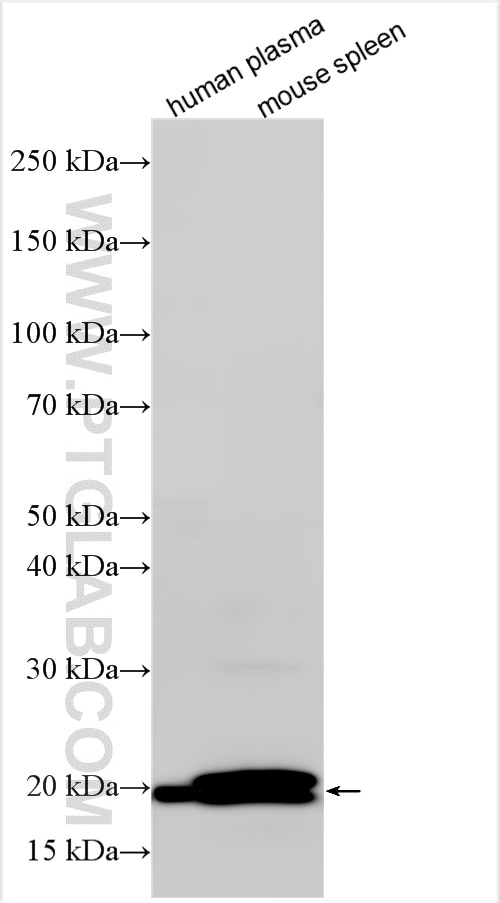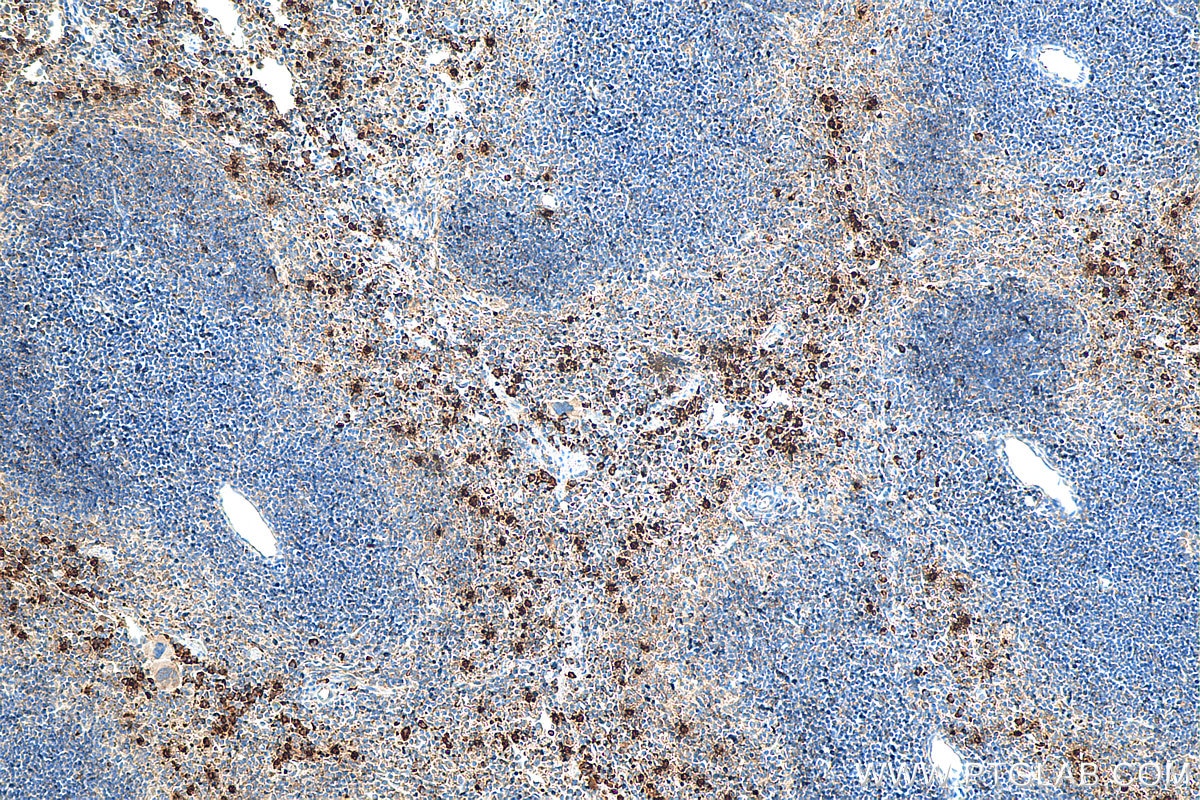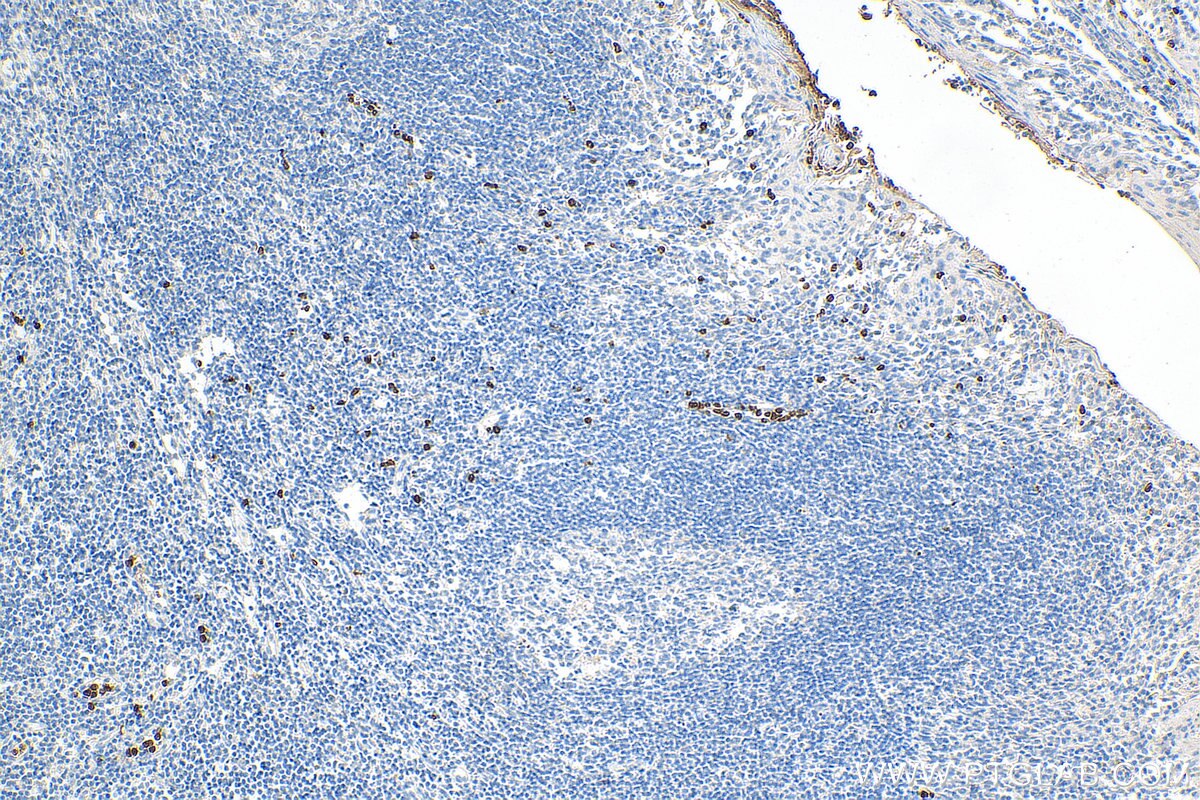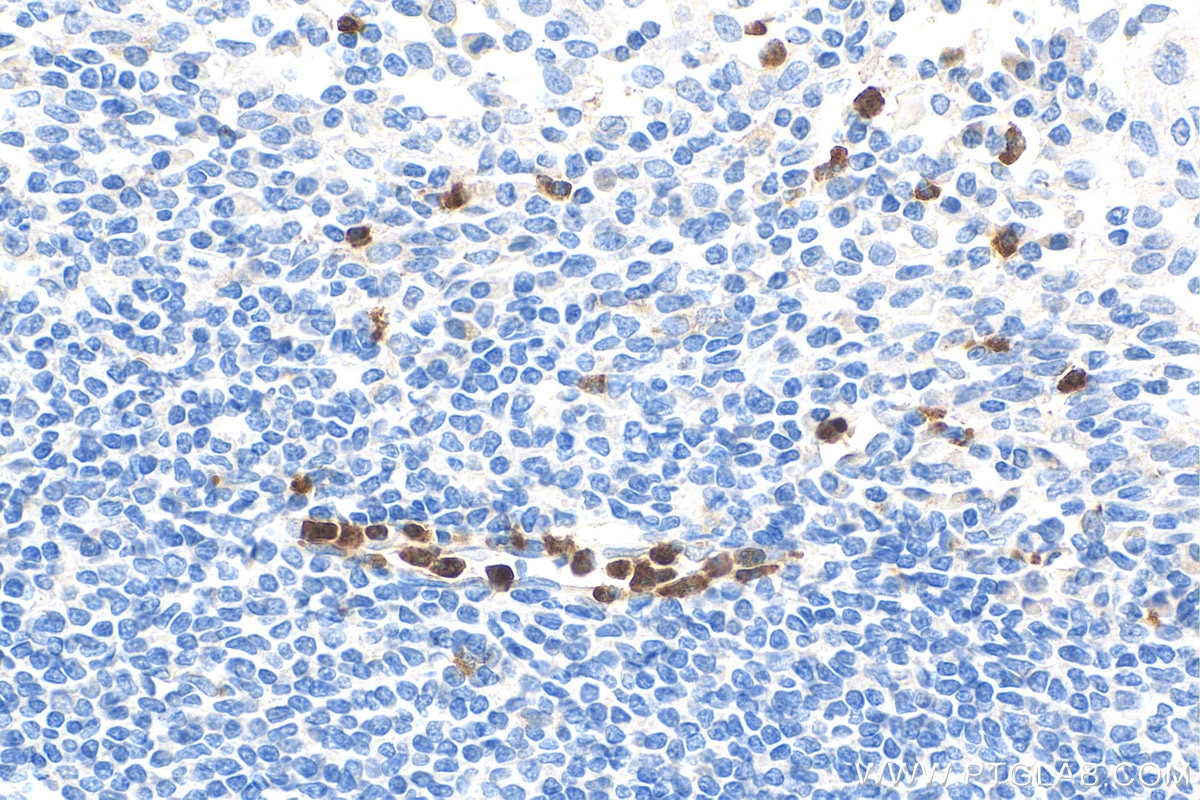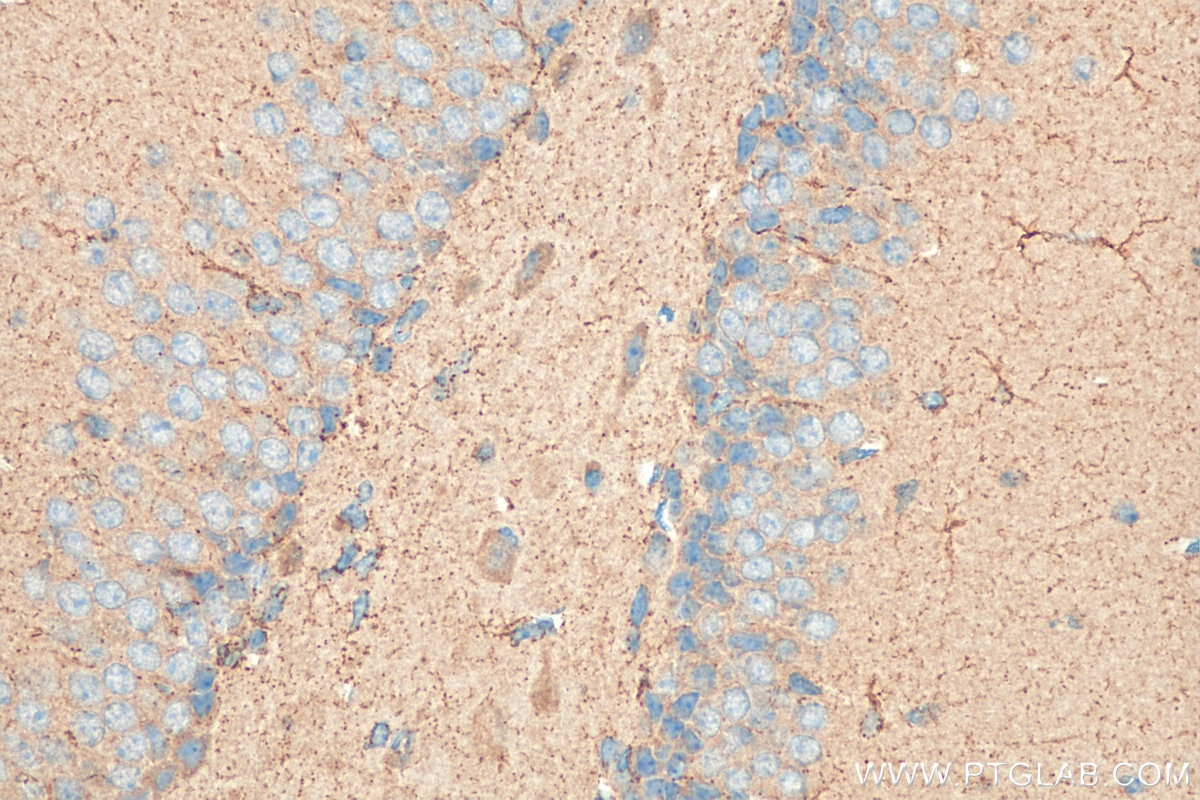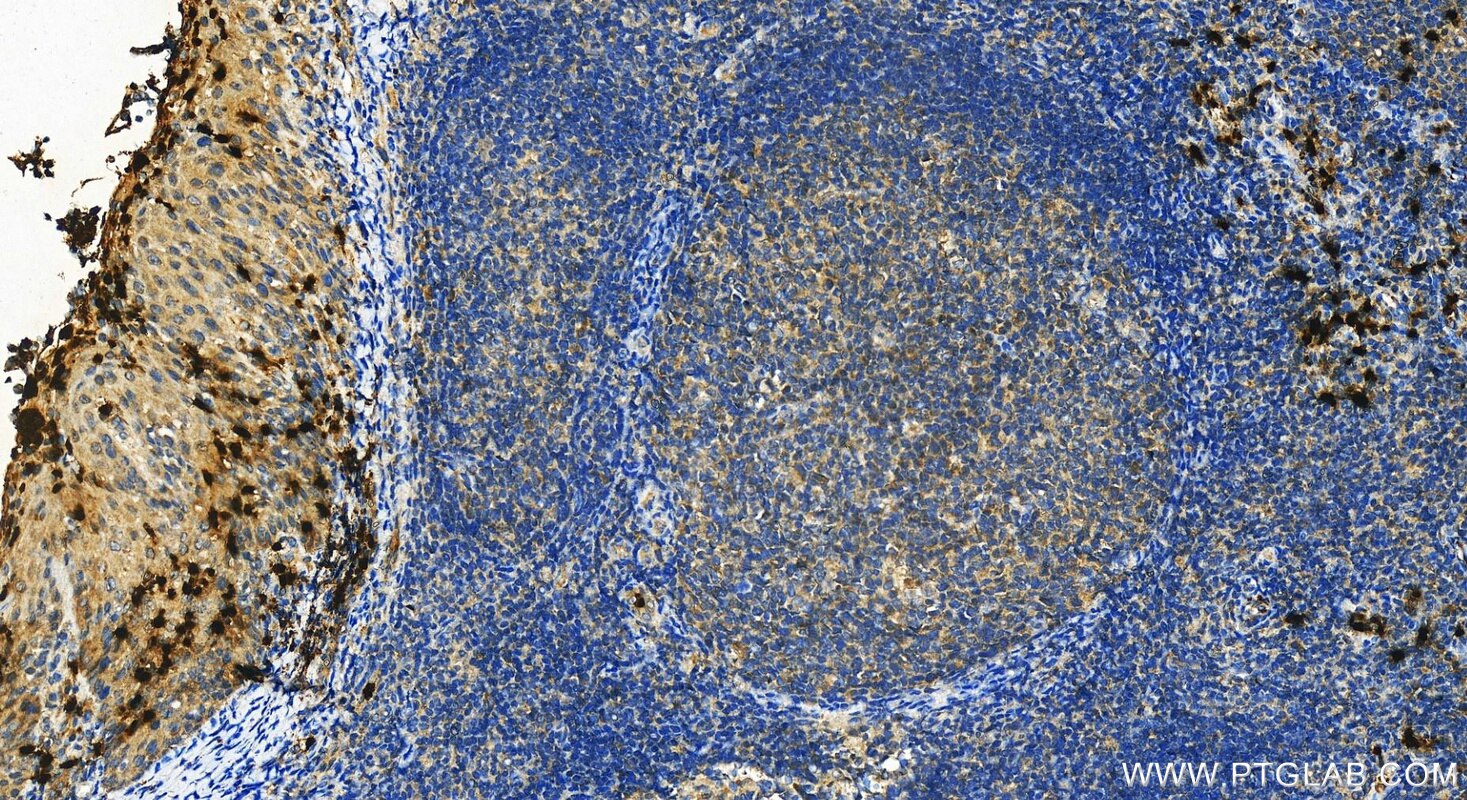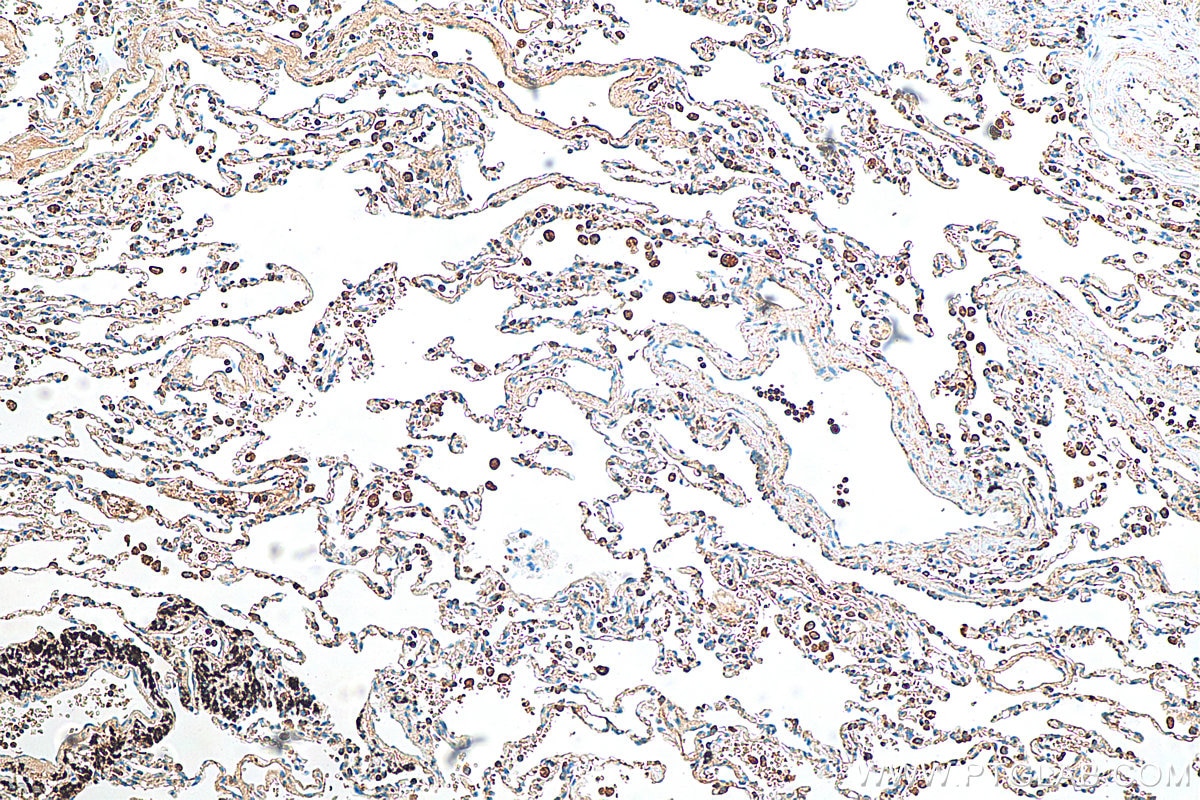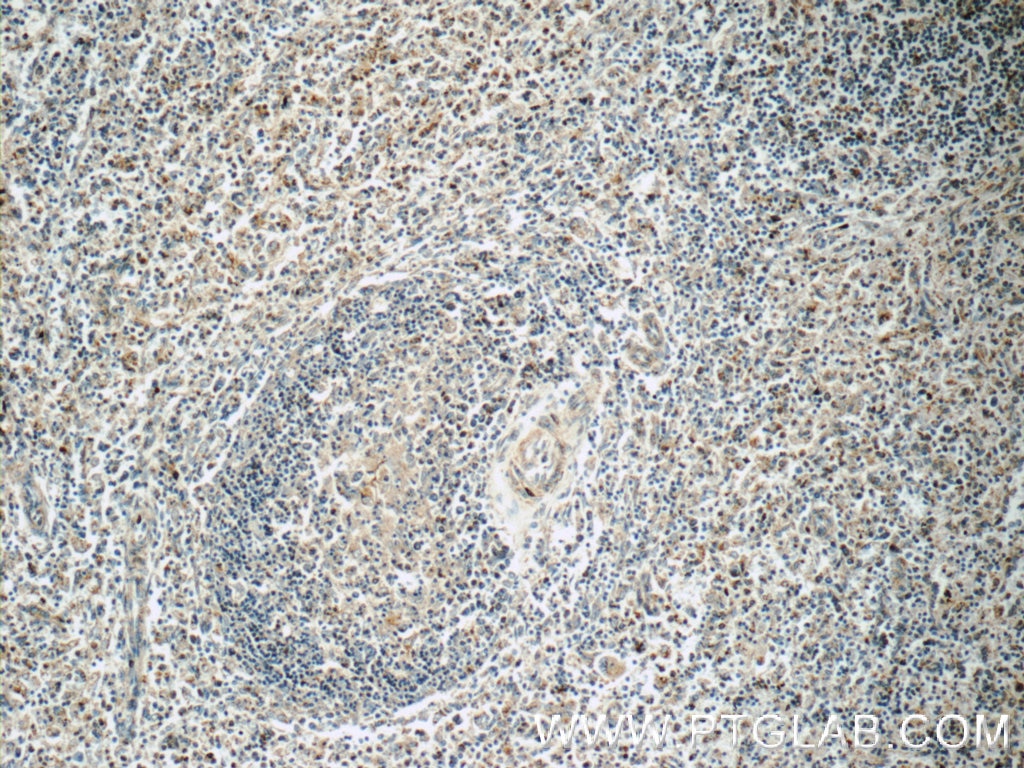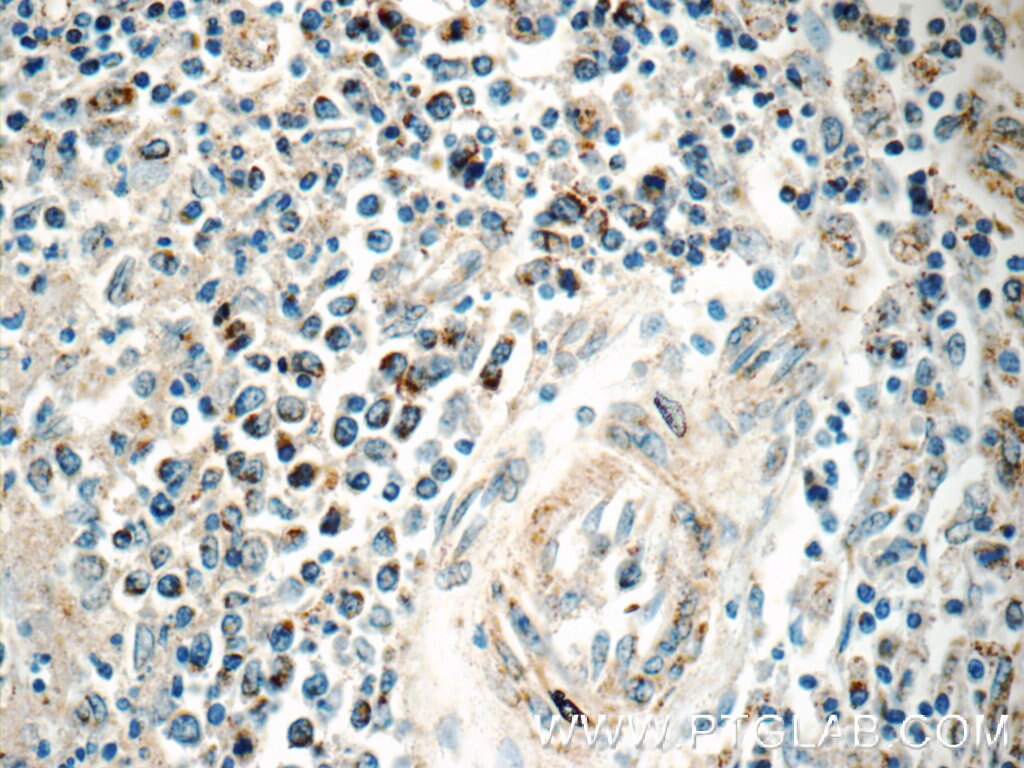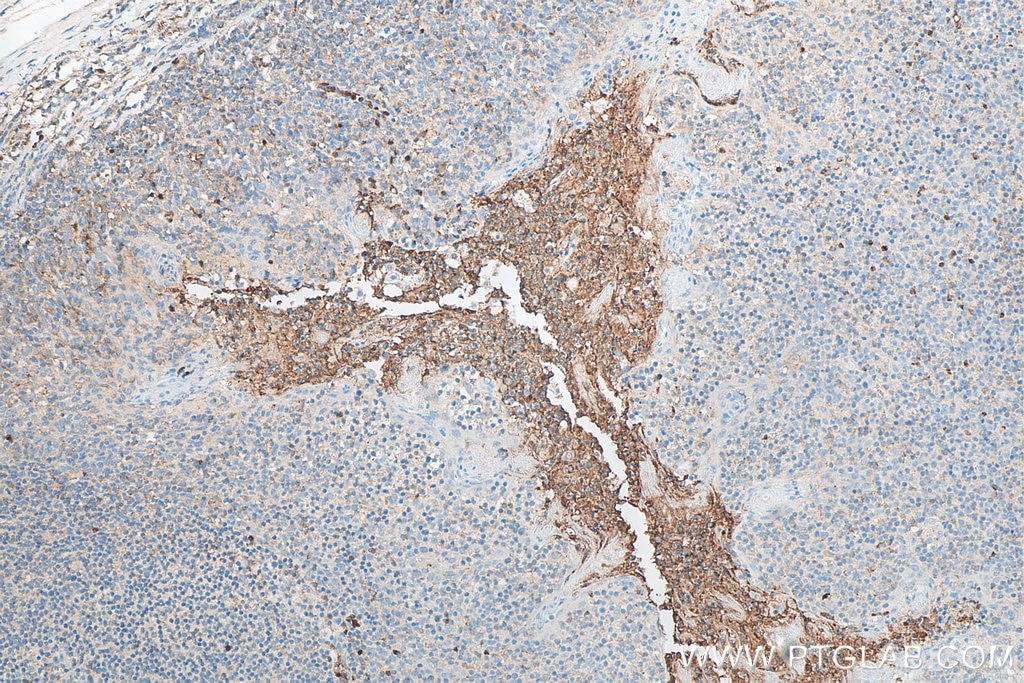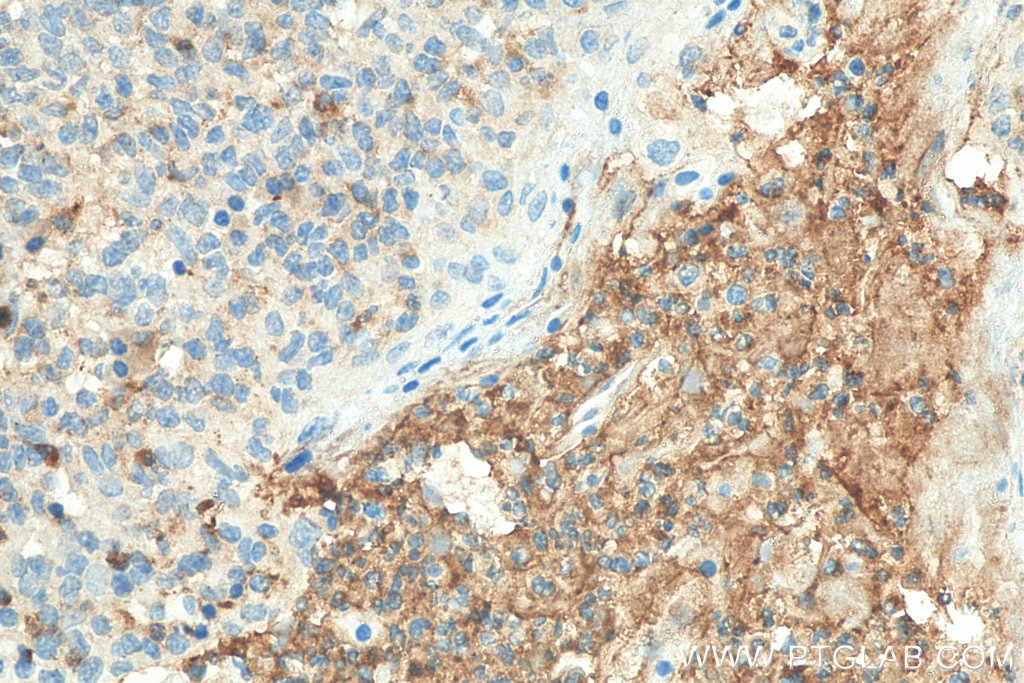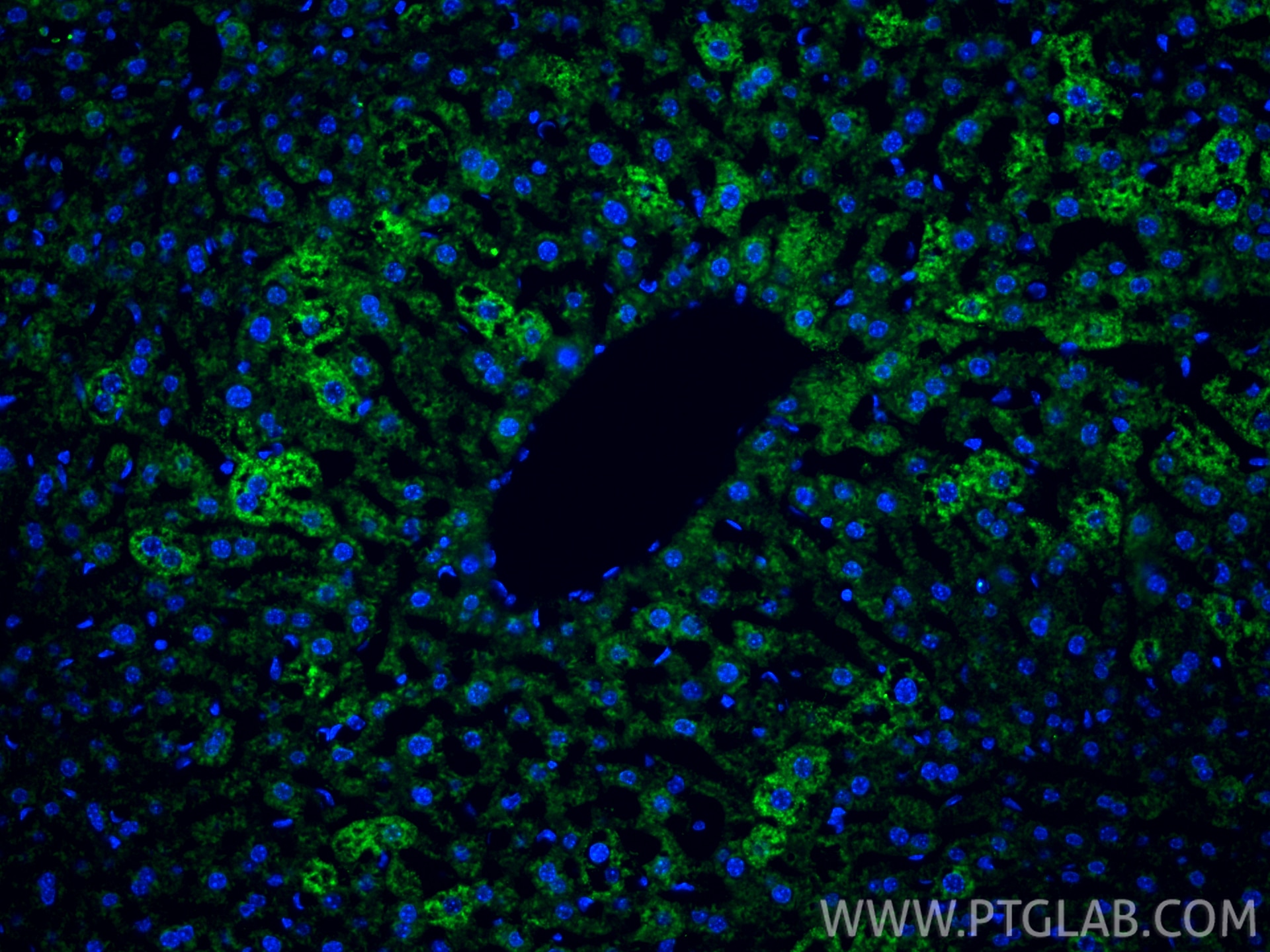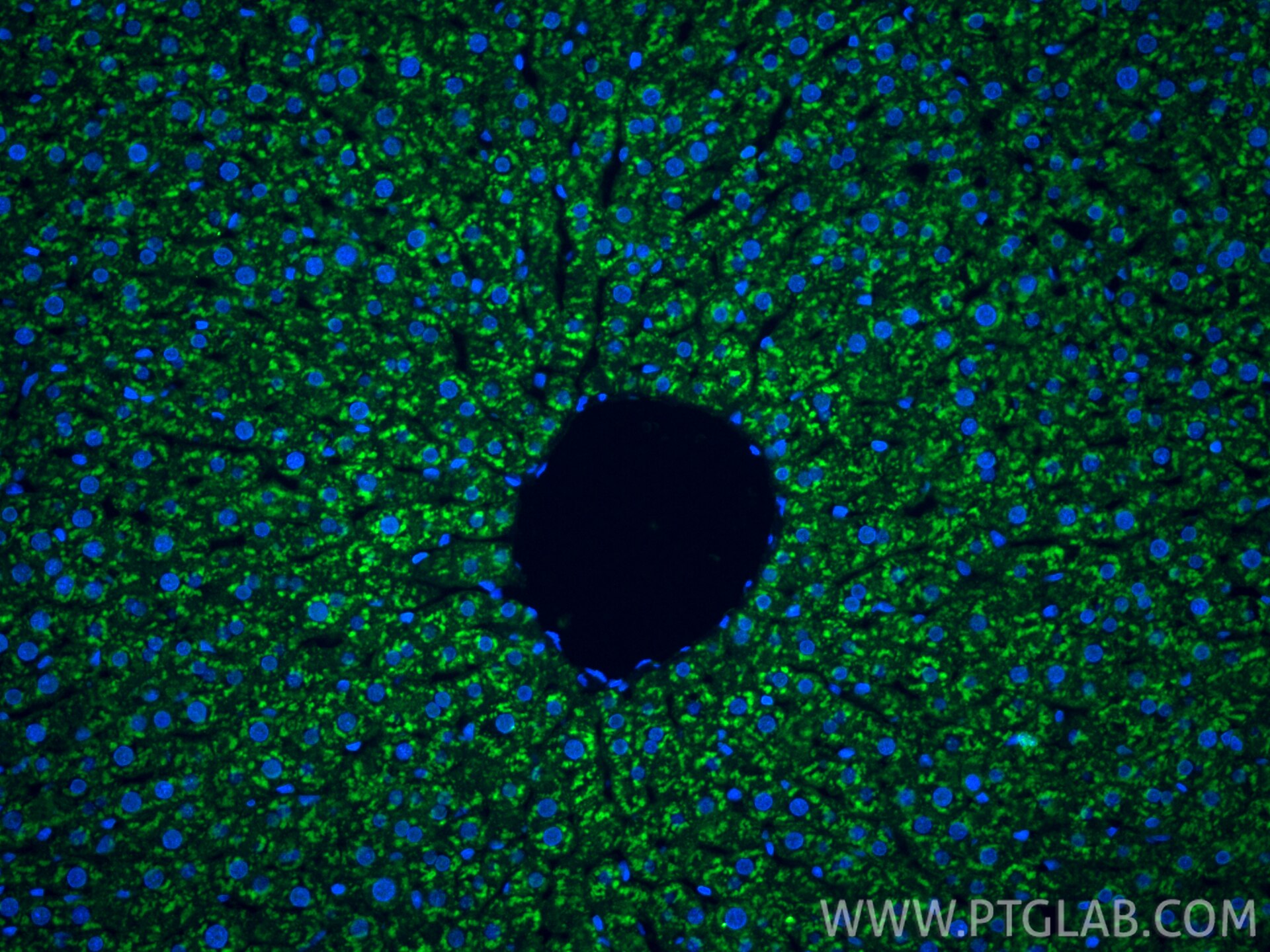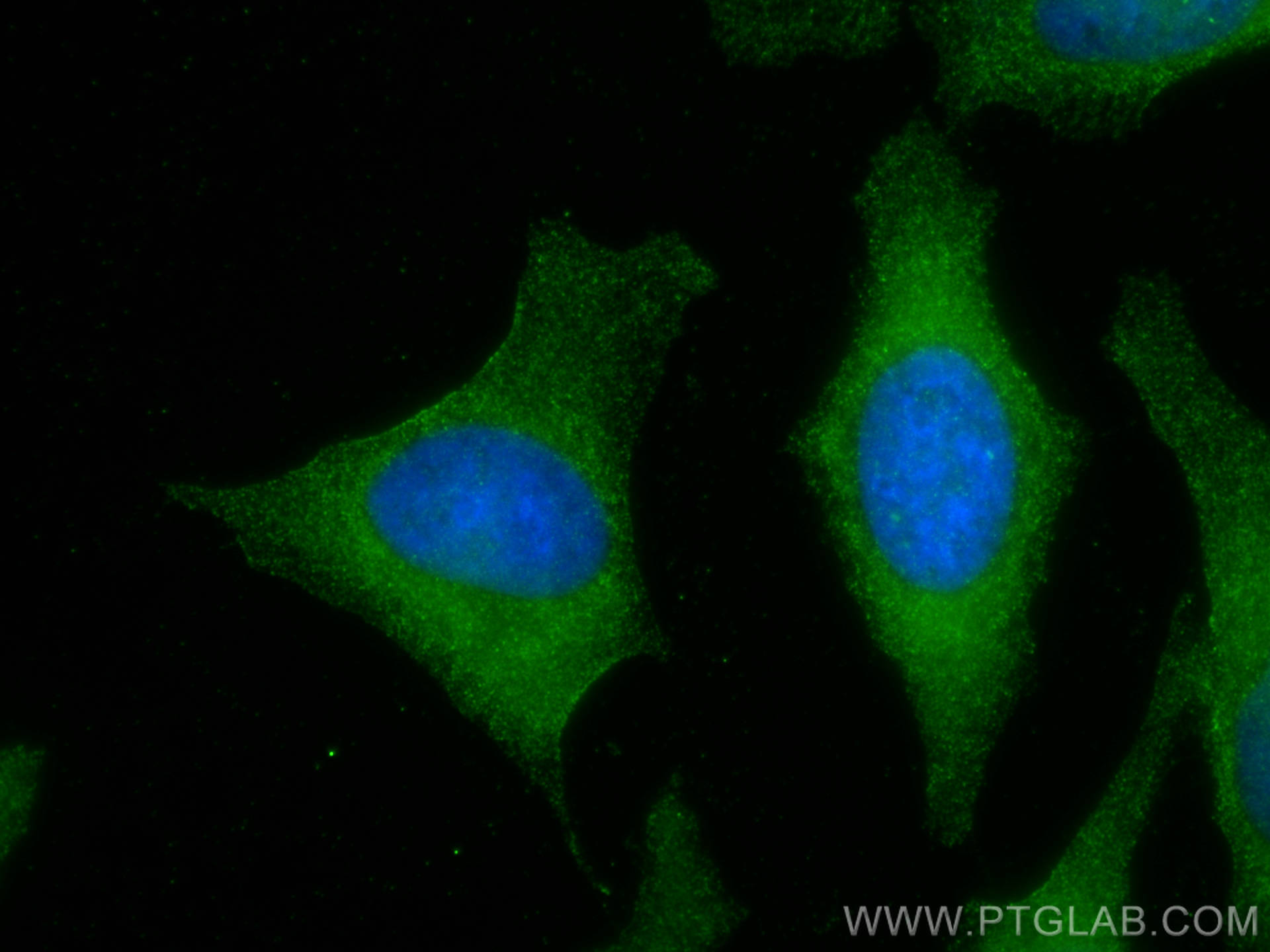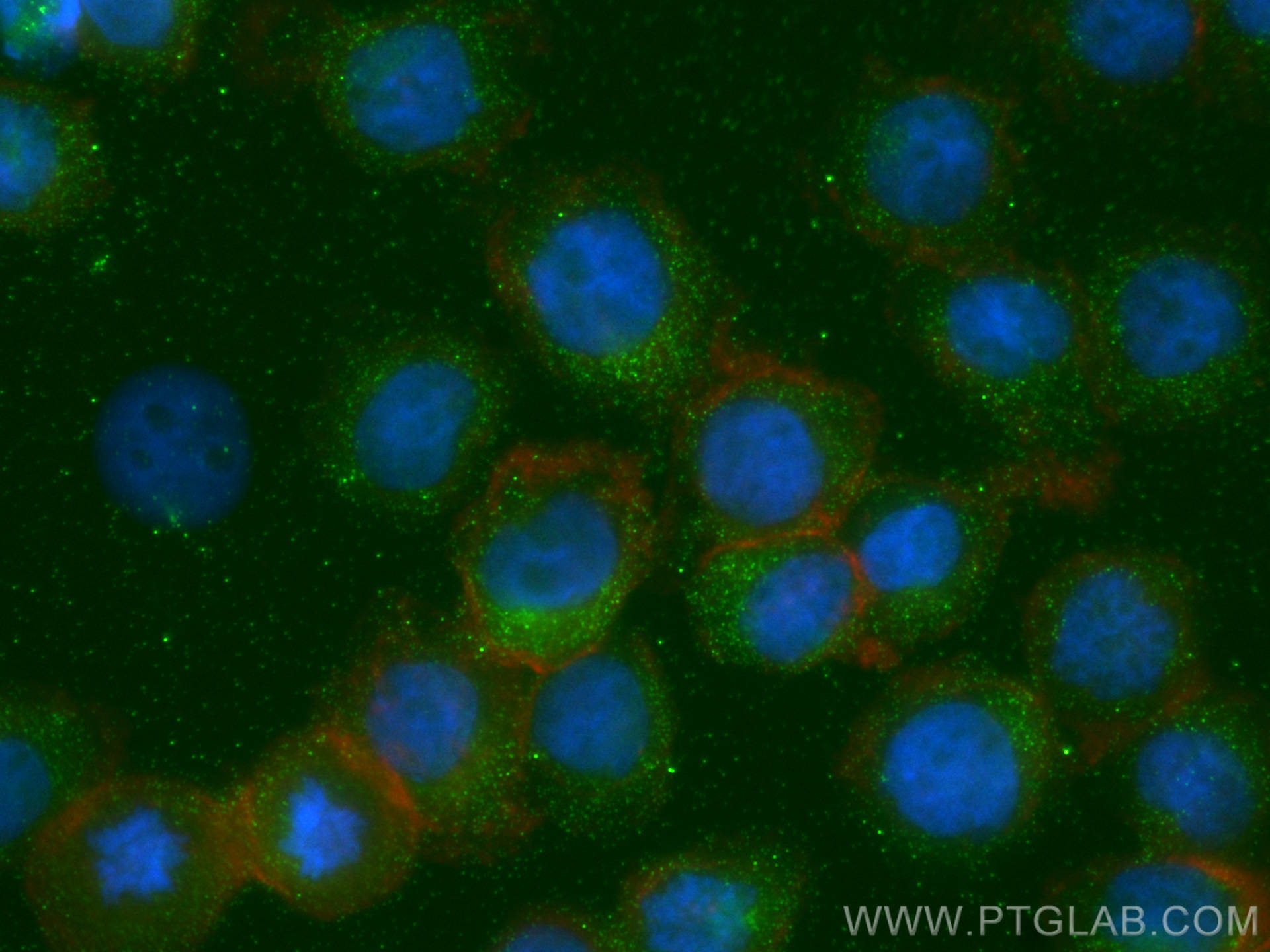Tested Applications
| Positive WB detected in | human plasma, mouse spleen tissue |
| Positive IHC detected in | mouse spleen tissue, human lung cancer tissue, human spleen tissue, human tonsillitis tissue, mouse brain tissue Note: suggested antigen retrieval with TE buffer pH 9.0; (*) Alternatively, antigen retrieval may be performed with citrate buffer pH 6.0 |
| Positive IF-P detected in | rat liver tissue, mouse liver tissue |
| Positive IF/ICC detected in | HeLa cells, THP-1 cells |
Recommended dilution
| Application | Dilution |
|---|---|
| Western Blot (WB) | WB : 1:500-1:2000 |
| Immunohistochemistry (IHC) | IHC : 1:50-1:500 |
| Immunofluorescence (IF)-P | IF-P : 1:50-1:500 |
| Immunofluorescence (IF)/ICC | IF/ICC : 1:200-1:800 |
| It is recommended that this reagent should be titrated in each testing system to obtain optimal results. | |
| Sample-dependent, Check data in validation data gallery. | |
Published Applications
| WB | See 10 publications below |
| IHC | See 3 publications below |
| IF | See 2 publications below |
Product Information
12009-1-AP targets CAMP in WB, IHC, IF/ICC, IF-P, ELISA applications and shows reactivity with human, mouse samples.
| Tested Reactivity | human, mouse |
| Cited Reactivity | human, mouse, rat |
| Host / Isotype | Rabbit / IgG |
| Class | Polyclonal |
| Type | Antibody |
| Immunogen |
CatNo: Ag2622 Product name: Recombinant human CAMP protein Source: e coli.-derived, PGEX-4T Tag: GST Domain: 1-170 aa of BC055089 Sequence: MKTQRDGHSLGRWSLVLLLLGLVMPLAIIAQVLSYKEAVLRAIDGINQRSSDANLYRLLDLDPRPTMDGDPDTPKPVSFTVKETVCPRTTQQSPEDCDFKKDGLVKRCMGTVTLNQARGSFDISCDKDNKRFALLGDFFRKSKEKIGKEFKRIVQRIKDFLRNLVPRTES Predict reactive species |
| Full Name | cathelicidin antimicrobial peptide |
| Calculated Molecular Weight | 170 aa, 19 kDa |
| Observed Molecular Weight | 18 kDa |
| GenBank Accession Number | BC055089 |
| Gene Symbol | CAMP |
| Gene ID (NCBI) | 820 |
| RRID | AB_908736 |
| Conjugate | Unconjugated |
| Form | Liquid |
| Purification Method | Antigen affinity purification |
| UNIPROT ID | P49913 |
| Storage Buffer | PBS with 0.02% sodium azide and 50% glycerol, pH 7.3. |
| Storage Conditions | Store at -20°C. Stable for one year after shipment. Aliquoting is unnecessary for -20oC storage. 20ul sizes contain 0.1% BSA. |
Background Information
CAMP is a member of an antimicrobial peptide family, characterized by a highly conserved N-terminal signal peptide containing a cathelin domain and a structurally variable cationic antimicrobial peptide, which is produced by extracellular proteolysis from the C-terminus. In addition to its antibacterial, antifungal, and antiviral activities, the encoded protein functions in cell chemotaxis, immune mediator induction, and inflammatory response regulation. CAMP encodes the 18-kDa proprotein hCAP18. FALL-39 and LL-37 are the mature cathelicidin peptides. This antibody can recognize all the proprotein and cleaved species.
Protocols
| Product Specific Protocols | |
|---|---|
| IF protocol for CAMP antibody 12009-1-AP | Download protocol |
| IHC protocol for CAMP antibody 12009-1-AP | Download protocol |
| WB protocol for CAMP antibody 12009-1-AP | Download protocol |
| Standard Protocols | |
|---|---|
| Click here to view our Standard Protocols |
Publications
| Species | Application | Title |
|---|---|---|
EMBO Mol Med Gut microbiota-CRAMP axis shapes intestinal barrier function and immune responses in dietary gluten-induced enteropathy. | ||
Digestion Hesperidin Improves Colonic Motility in Loeramide-Induced Constipation Rat Model via 5-Hydroxytryptamine 4R/cAMP Signaling Pathway. | ||
Pharm Biol Modified BuShenYiQi formula alleviates experimental allergic asthma in mice by negative regulation of type 2 innate lymphoid cells and CD4 + type 9 helper T cells and the VIP-VPAC2 signalling pathway | ||
Sci Prog Ginsenoside Rg1 exerts anti-arrhythmic effect by inhibiting ICaL through cAMP-PKA and PI3K-AKT signaling pathways in rat ventricular myocytes after myocardial ischemia-reperfusion injury | ||
Immunobiology IL-33 synergistically promotes the proliferation of lung cancer cells in vitro by inducing antibacterial peptide LL-37 and proinflammatory cytokines in macrophages. | ||
Res Vet Sci Proteomic analysis of murine bone marrow derived dendritic cells in response to peste des petits ruminants virus. |

